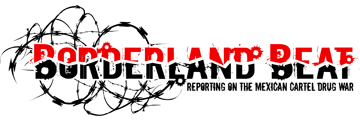 |
|
A taxi driver is
assassinated in a shopping center in Culiacán. Photo: Rashide Frias,
Cuartoscuro
|
By: Alejandro Páez Varela |
Translated by Valor for Borderland Beat
On December 11, 2006,
with the country turning the other way— the opponents of the president in a
yell— a war was launched without ever having been consulted with by
anyone. It’s been a decade, recalls the
author of this text, and “on the streets, the Mexican Army continues and there
is a widespread feeling that it operates with impunity, a war of
extermination. Crimes continue and armed
groups have diversified their income relying on impunity. There is no effective state policy to
compensate for damages to victims or to deter youths from armed groups. The police have not been cleaned up and
narco-politics seems to keep the reserves that it had before the start of the
confrontation. There aren’t major
advances in the criminal justice system; torture, the UN says, is widespread;
prisons are schools of criminals; money laundering operations continue to
develop and now, all this time, a glimmer of light: the possibility that
marijuana might at least be decriminalized.”
Mexicans, At The Cry Of War
Suddenly, as never
before, the streets of many cities of our country lost a virginity that it had
maintained since the 1910 Revolution: Mexican Army units were displaced but not
to the barracks, not to any community in a tragedy by a hurricane or an
earthquake. They came with their weapons
in front to stay there, in the corners, on the sidewalks, where cops were
before.
It wasn’t a minor
change for a majority who were used to seeing soldiers on television. With them, from the night to the morning,
bulletproof vests appeared, machine guns mounted in open vehicles, outlines of
federal police. And what seemed to be a
temporary thing kept spreading for months, and then years. Armored cars became common throughout the
country while terms such as “executed”, “sicario”, “kidnapped”, “agitated”,
“company”, or “decapitated” became part of the jargon of many in the media, of
journalists and of the population in general.
In a few years, we
added another term, which nobody knows whether it was coined in the press or in
the streets, to that ominous language, but it clearly came from a new
reality. “Narcofosas” (Narco-graves),
for example, which refers to clandestine cemeteries scattered throughout the
territory; “autodefensas”, which refers to the efforts of the citizens to
defend themselves against criminals that seized physical territories and of the
income of its inhabitants. Extortion was
just a word until now, when it became a reality spreading throughout cities and
in huge urban sprawls, such as the State of Mexico surrounding the capital. And among all the words that became common, a
jarring: “kitchen”, and all its derivations: the verb “to cook” or the subject
“the cook”. It refers to the massive
disappearance of bodies in acids or burned in 200 liter drums. Bodies from the war between cartels or simply
just victims of violence.
The sun became clouded
for cities that were synonymous with relaxation and fun, like Acapulco,
Morelia, or Cuernavaca. States with
relative tranquility, such as San Luis Potosí or Guanajuato became restless
lands. Life became impossible in
societies that were already permeated by the narco, such as Ciudad Juárez,
Apatzingán, Tijuana, Chihuahua, Piedras Negras, Nuevo Laredo or Reynosa.
The pus of violence
that came with the war spread throughout towns and villages, and at the dawn of
this reality, names of new criminal gangs appeared and consolidated their
presence at almost the same time that the federal government showed off the
arrest of heads of drug trafficking groups.
The decapitated became
common, as well as heads in coolers, mayors and journalists assassinated,
police officers kidnapped and tortured.
Entire towns entered psychoses, from north to south, while the hidden
powers were sharpening up their tools they used to control: they dared to dictate,
through social networks, “curfews”.
And it all happened in
the blink of an eye.
 |
|
“The president doesn’t listen.” Photo:
Cuartoscuro
|
If The Bugle With Its Bellicose Accent
Certainly, the war on
drugs is not new and hasn’t lasted for a decade. History attributes it to Richard Nixon, who
declared drugs as “public enemy #1” in the United States in 1971. Mexico, a production and transit territory
for a century, joined the late 20th century under pressure from
Washington, particularly over allegation of corruption and omission that came
from the agencies, in the Executive and Congress.


























